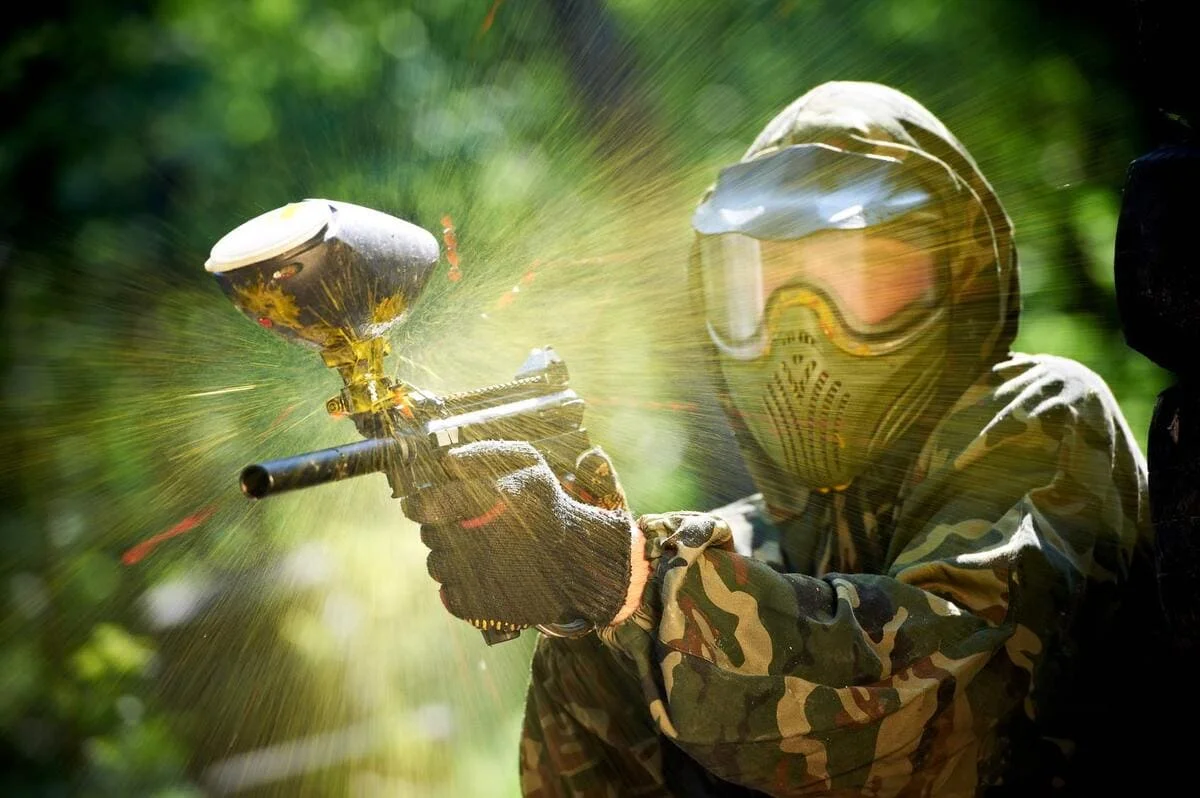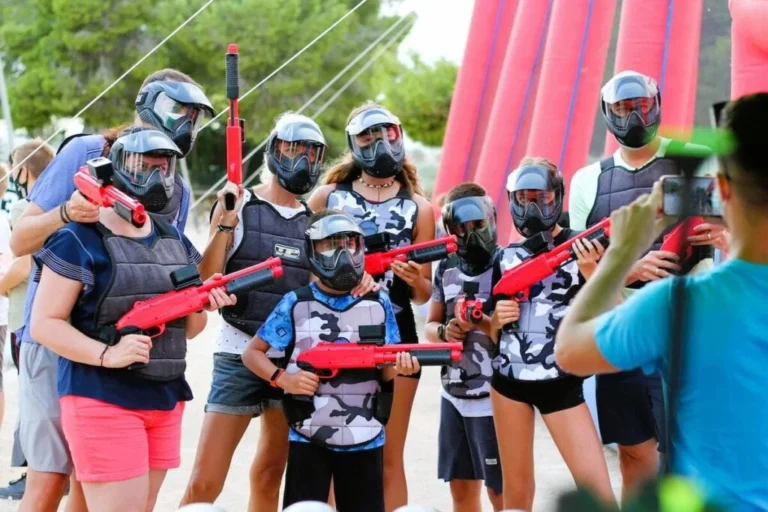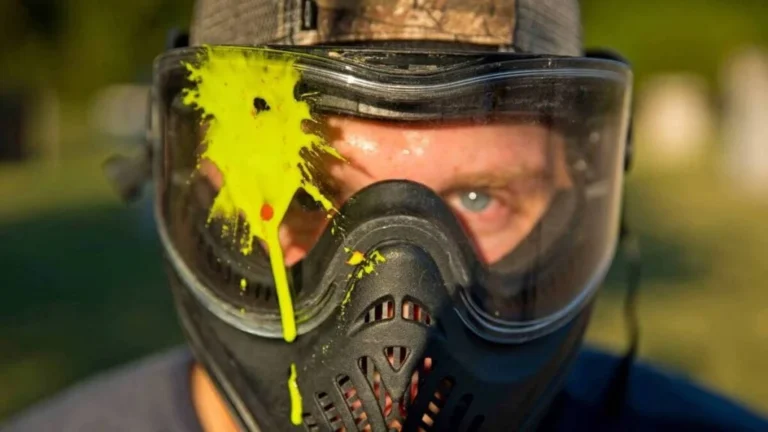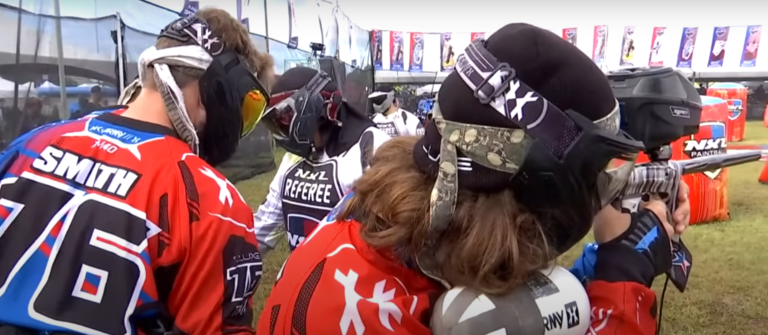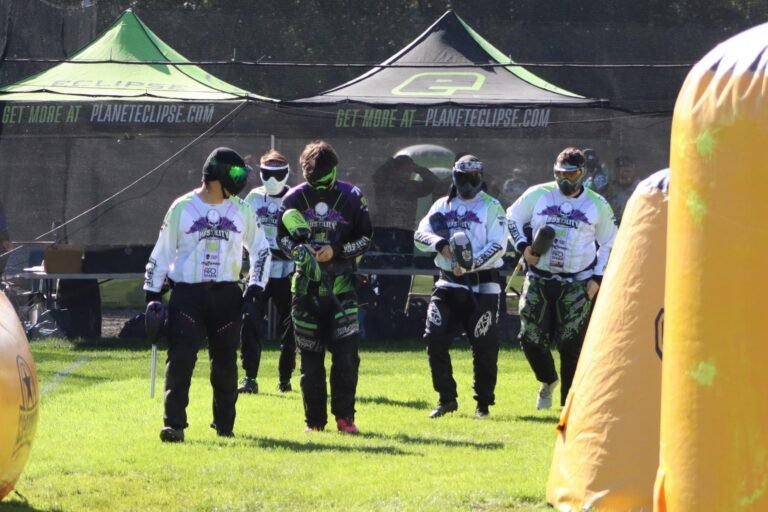HOW FAST DOES A PAINTBALL GUN SHOOT?
How fast does a paintball gun shoot? Have you ever wondered about this when playing paintball? When you are in the thrill of the game and you try to dodge the rapid speed of the ball, it may have crossed your mind.
So let’s find out exactly how fast a paintball moves.
How Fast Does A Paintball Gun Shoot?
The speed of a paintball fired from a gun is measured in FPS, also known as Feet Per Second. The average paintball gun shoots at a velocity of over 250 FPS to 300 FPS. In all paintball venues, a paintball must not shoot over 280 FPS; otherwise, it can cause injury or harm to opponents.
Every player needs to take a test first so they are not firing at more FPS, which could cause damage. You can easily test the speed of your paintball gun with a simple test. If you want to learn about it, please keep reading till the end.
So, the speed of the paintball fired mostly depends on several components, but most importantly, it depends on the paintball marker.

Understanding Paintball Marker Components and Shot Velocity
It’s important to familiarize ourselves with paintball markers, commonly known as guns, to understand the speed of paintball shots. These markers consist of various components that contribute to the velocity of the paintball when fired.
The air pressure settings, barrel length, bore size, paintball weight, and quality are the components that play crucial roles in determining how fast a paintball will travel.
Now, let’s take a look at them in details.
Barrel of the gun
You need to understand how paintball guns function and how barrel length influences speed.
When you squeeze the trigger, a burst of carbon dioxide is discharged behind the paintball. This sudden gas release creates pressure that propels the paintball out of the barrel. The speed at which the paintball travels is known as its muzzle velocity.
The length of the barrel affects the time the paintball spends in the barrel before it is released. A longer barrel gives the gas more time to push the paintball forward, which provides it with top speed. On the other hand, a shorter barrel allows less time for the gas to act on the paintball, which suggests it will travel at a slow speed.
Air pressure
Air pressure is like a big push from the air. It helps paintballs come out of a paintball gun.
We measure air pressure in a particular way called PSI, which means Pounds per Square Inch. Most paintball guns use air pressure between 3000 and 5000 psi, but sometimes it can differ.
When you pull the trigger, compressed CO2 from a tank enters the firing chamber. This sudden rush of air builds pressure behind the paintball, propelling it forward. The air pressure pushes the paintball through the barrel and into the air. Hence, higher air pressure means a faster paintball.
Bore Size
The bore size refers to the inner diameter of the barrel. A smaller bore size creates a tighter fit around the paintball, allowing for a more efficient energy transfer and higher speeds.
Similarly, a larger bore size leads to less pressure and lower speeds due to air escaping around the paintball.
Paintball’s shape and quality
The quality and condition of the paintballs themselves can affect the speed and consistency of their flight. High-quality paintballs with consistent size and shape will have better aerodynamics, resulting in more predictable speeds and trajectories.
Bolt and valve system
The bolt and valve system controls the release of air or gas to propel the paintball. Different paintball guns use various mechanisms like blowback, spool, or poppet valve systems.
The efficiency and design of these systems can affect the speed and consistency of the paintball’s propulsion.
Regulator
The regulator controls the airflow from the air source to the paintball gun. It helps maintain a consistent and regulated pressure, ensuring that each shot has the same force behind it.
A well-adjusted and consistent regulator helps maintain the constant velocity and speed of the paintballs.
Temperature
The temperature of the air or gas in the tank can influence its density and pressure, indirectly affecting the speed of the paintball.
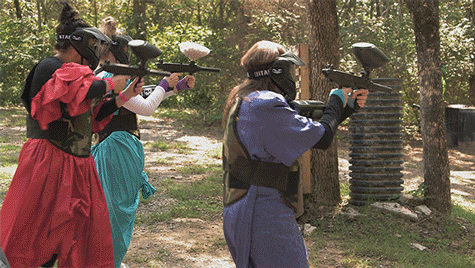
How Can You Measure The Speed Of A Paintball Gun?
Measuring paintball shot speed is done using a device called a chronograph. This handy tool measures the speed of the paintball in FPS.
It allows players to measure the velocity of their shots and ensures everything is within safety regulations. Many paintball facilities and fields employ chronographs to enforce a maximum speed limit for the safety of all participants.
Should You Enhance Paintball Speed?
While some players may desire to increase their paintball shot speed, it’s important to consider the implications.
Upgrading and modifying markers can potentially enhance shot speed, but it’s crucial to understand the associated risks. Higher velocities can lead to increased impact and potential injury.
Tournament play and paintball fields often have strict regulations in place to maintain a fair and safe environment for all participants.
Safety Considerations While Playing Paintball
Safety is a key factor in paintball, and maintaining appropriate shot speeds is crucial to preventing injuries. The local state, area, or paintball facilities have made their own rules to ensure players’ well-being.
Protective gear, such as goggles, masks, and padded clothing, should always be worn to safeguard against potential impacts. These safety measures and responsible gameplay contribute to an enjoyable paintball experience.
Conclusion
Understanding the speed at which a paintball shoots is vital for both safety and gameplay. By considering factors such as air pressure settings, barrel length, paintball weight, and marker efficiency, players can achieve desired shot speeds while adhering to industry standards.
Always prioritize safety by wearing appropriate protective gear and following local regulations. Enjoy the exhilarating world of paintball, but remember to play responsibly and with respect for your fellow players!

